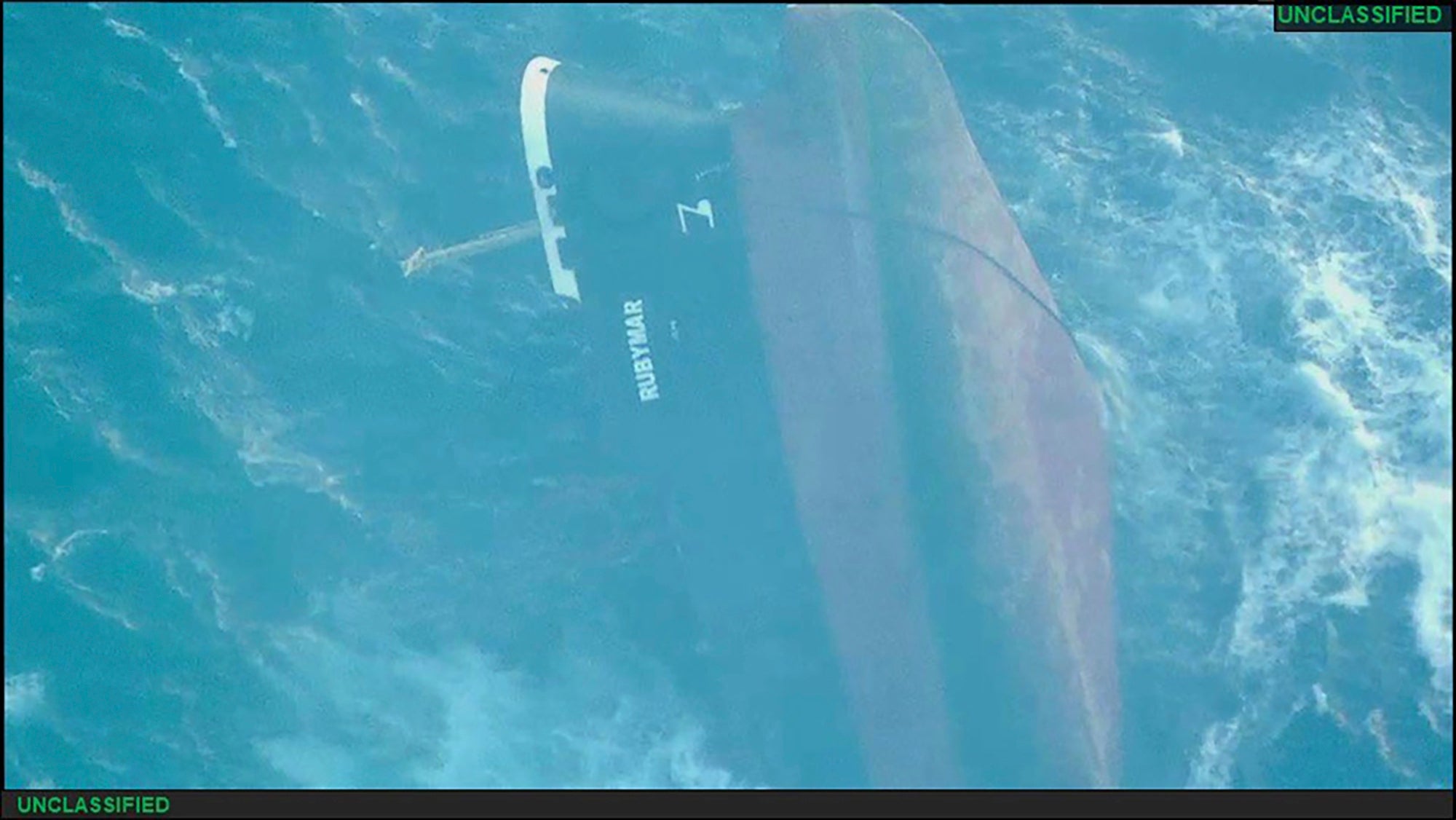Three underwater data cables through the Red Sea are cut amid Houthi rebel attacks in the area
An incident in the Red Sea has cut three underwater sea cables providing internet and telecommunications around the world as the waterway remains a target of Yemen’s Houthi rebels

An incident in the Red Sea has cut three underwater sea cables providing internet and telecommunications around the world as the waterway remains a target of Yemen's Houthi rebels, officials said Monday.
A statement by Hong Kong-based HGC Global Communications acknowledged the cuts but did not say what caused the lines to be severed. There has been concern about the cables being targeted in the Houthi campaign, which the rebels describe as an effort to pressure Israel to end its war on Hamas in the Gaza Strip. The Houthis have denied attacking the lines, however.
While global shipping already has been disrupted through the Red Sea, a crucial route for cargo and energy shipments from Asia and the Middle East to Europe, the sabotage of telecommunication lines could further escalate the monthslong crisis. Meanwhile, a suspected Houthi attack targeted a new ship in the Gulf of Aden.
The cut lines include Asia-Africa-Europe 1, the Europe India Gateway, Seacom and TGN-Gulf, HGC Global Communications said. It described the cuts as affecting 25% of the traffic flowing through the Red Sea. It described the Red Sea route as crucial for data moving from Asia onward to Europe and said it had begun rerouting traffic.
HGC Global Communications described the Seacom-TGN-Gulf line as being two separate cables when it is actually one at the area of the cut, according to Tim Stronge, a subsea cable expert with TeleGeography, a Washington-based telecommunications market research company.
Responding to questions from The Associated Press, Seacom said that “initial testing indicates the affected segment lies within Yemeni maritime jurisdictions in the Southern Red Sea.” It said it was rerouting the traffic it was able to change, though some services were down.
Tata Communications, part of the Indian conglomerate and behind the Seacom-TGN-Gulf line, told the AP it “initiated immediate and appropriate remedial actions” after the line was cut.
“We invest in various cable consortiums to increase our diversity and hence in such situations of a cable cut or snag we are able to automatically reroute our services,” Tata said.
Other firms behind those lines, which provide data to Africa, Asia and the Middle East, did not immediately respond to queries Monday from the AP.
In early February, Yemen's internationally recognized government in exile alleged that the Houthis planned to attack the cables. The lines appeared to have been cut on Feb. 24, with the organization NetBlocks noticing internet access in the East African nation of Djibouti suffering from interruptions two days later. Seacom, one of the four cables cut, serves Djibouti.
But for their part, the Houthis have denied targeting the cables. The Houthis blamed the disruptions on British and U.S. military operations but did not offer evidence to support the allegation and have made false claims in the past.
“The hostilities on Yemen by the British and U.S. naval military units caused a disruption in the submarine cables in the Red Sea, which jeopardized the security and safety of international communications and the normal flow of information,” the Houthi-controlled Transportation Ministry in Yemen's rebel-held capital, Sanaa, alleged.
Since November, the rebels have repeatedly targeted ships in the Red Sea and surrounding waters over the Israel-Hamas war. Those vessels have included at least one with cargo bound for Iran, the Houthis’ main benefactor, and an aid ship later bound for Houthi-controlled territory.
Despite more than a month and a half of U.S.-led airstrikes, Houthi rebels have remained capable of launching significant attacks. They include the attack last month on a cargo ship carrying fertilizer, the Rubymar, which sank on Saturday after drifting for several days, and the downing of an American drone worth tens of millions of dollars.
The Houthis insist their attacks will continue until Israel stops its combat operations in the Gaza Strip, which have enraged the wider Arab world and seen the Houthis gain international recognition.
There has been a slowdown in attacks in recent days. The reason for that remains unclear. Between four to eight U.S. and allied warships now patrol the Red Sea on any given day, said Maj. Pete Nguyen, a Defense Department spokesperson.
The British military's United Kingdom Maritime Trade Operations center on Monday separately warned of a new possible attack in the Gulf of Aden. The private security firm Ambrey described the vessel targeted as a Liberia-flagged, Israel-affiliated container ship that sustained damage and issued a distress call.
It remains unclear how the Houthis could attack the subsea cables themselves. The rebels are not known to have the diving or salvage capability to target the lines, which sit hundreds of meters (feet) below the surface of the waterway.
However, subsea cables can be cut by anchors, including those dropped from ships that are disabled in attacks. A drifting ship with its anchor scraping the sea could be the culprit.
“Our team thinks it is plausible that it could have been affected by anchor dragging, due to the amount of marine traffic the region deals with and the low seabed in many parts of the Red Sea,” Seacom said. “This can only be confirmed once the repair ship is on site.”
There at 14 cables now running through the Red Sea, with another six planned, Stronge said.
“We estimate that over 90% of communications between Europe and Asia traverse submarine cables in the Red Sea,” he said. “Fortunately, telecom operators have built a high degree of redundancy built into the system — there are many cables traverse the Red Sea.”